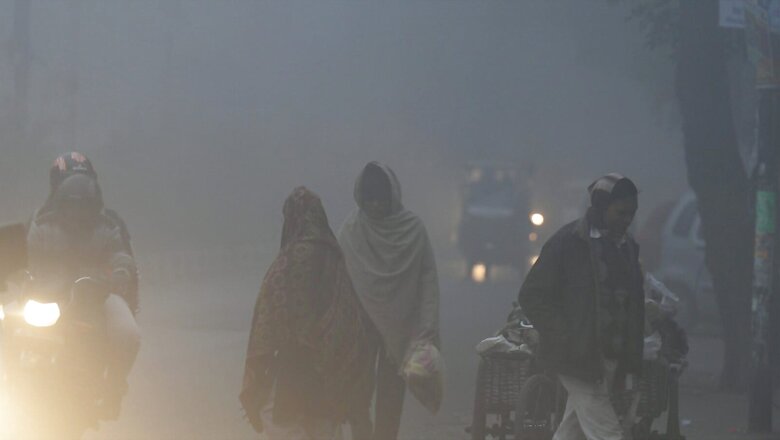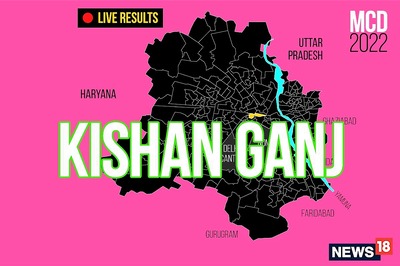
views
Northwest India have shivered in cold wave conditions for the past some days. Dense fog adversely affected air, rail and road traffic and led to several road accidents in the region.
However, the India Meteorological Department (IMD) said there will be a rise in minimum temperatures by about 2 degrees Celsius in many parts of Northwest India during next 24 hours but no significant change for subsequent 48 hours and gradual fall by 3-5 degrees thereafter.
Cold wave conditions abated in Delhi on Tuesday due to a fresh western disturbance affecting northwest India. The Safdarjung observatory, Delhi’s primary weather station, recorded a minimum temperature of 6.4 degrees Celsius as against 3.8 degrees Celsius on Monday, news agency PTI reported.
ALSO READ: Delhi Cold Wave: Why Does Your Breath Become Visible During Winters? EXPLAINED
What is a Cold Wave?
Cold wave is a condition of air temperature which becomes fatal to human body when exposed. A cold wave is observed when the minimum temperature goes down below 4 degrees in the plains or when the minimum temperature is less than 10 degrees and 4.5 to 6.4 degrees below the normal. In severe cold wave, minimum temperature drops below 2 degrees.
RK Jenamani, IMD scientist said that large-scale fog cover is one of the main reasons contributing to the cold wave conditions in the region.
“While westerly and northwesterly winds of around 5 to 10 kmph in the afternoon have also been contributing to the dip in temperature, an important factor this month is fog, which has been lasting for longer durations, preventing sunlight from reaching the surface and affecting the radiation balance. There is no heating in the day time, and then there is the impact of the night. Foggy or cloudy nights are usually associated with warmer nights, but if the fog remains for two or three days, cooling begins even at night,” Jenamani was quoted as saying by Indian Express.
A blanket of fog forms over large swathes of the Indo-Gangetic plains due to light winds and high moisture near the land surface. In absence of western disturbances over the region, cold northwesterly winds have also been contributing to low temperatures.
“Western disturbances, which are storms from the Mediterranean region, are associated with a change in wind direction, bringing easterly winds to northwest India. The last time the region saw easterly winds was on December 29,” Jenamani said.
Delhi usually witnesses cold wave spells in late December and January. IMD data shows the number of cold wave days in January has ranged from none to seven over the past decade. The national capital did not record any cold wave days in December this winter but it has seen five such days this January which is more than last year, according to Indian Express.
Weather Forecast For Coming Days
People in northwest India will get some respite from cold wave as minimum temperatures will rise by about 2 degrees tomorrow. Cold Wave conditions are very likely in isolated pockets over Punjab, Haryana, Chandigarh, Delhi and Rajasthan on January 15-16. Dense to very dense fog will be observed in isolated pockets over Punjab, Haryana, Chandigarh, Delhi and Rajasthan.
Read all the Latest India News here



















Comments
0 comment